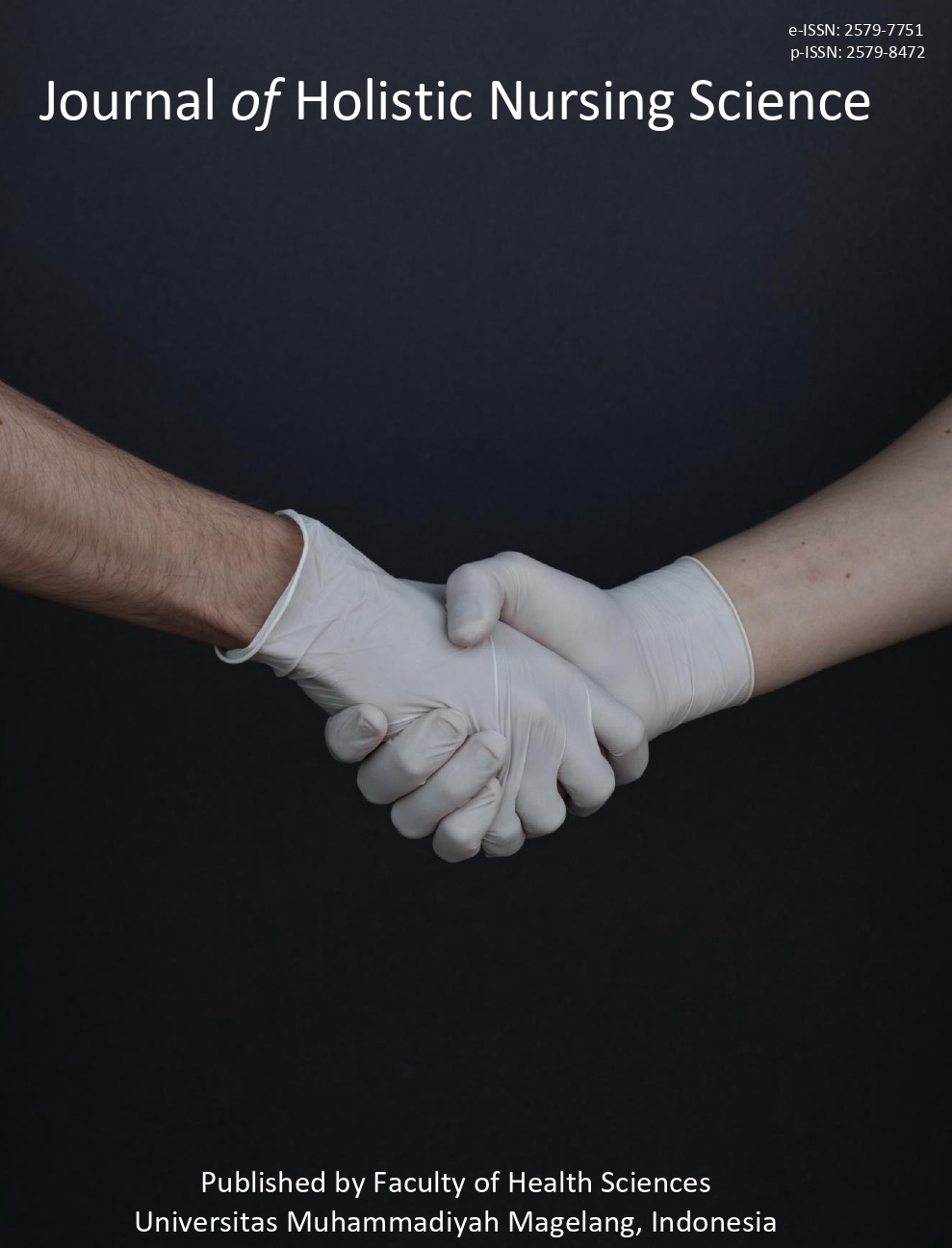Pengaruh Posisi Pronasi Pada Bayi Prematur Terhadap Perubahan Hemodinamik
Main Article Content
Abstract
Prematur merupakan bayi yang lahir sebelum usia kehamilan kurang dari 37 minggu. Lebih dari 75% bayi prematur mengalami gangguan pernafasan. Bayi prematur harus mendapat perhatian dan tatalaksana yang baik setelah lahir, untuk menghindari terjadinya masalah pernafasan yang lebih berat. Salah satu tatalaksana yang dapat menyokong terapi oksigen adalah pengaturan posisi pada bayi, yakni posisi pronasi. Posisi pronasi dilakukan untuk mengurangi kompresi abdomen dan memperbaiki fungsi pernapasan dan stabilitas kardiovaskuler. Penelitian ini bertujuan untuk mengetahui pengaruh pemberian posisi pronasi pada bayi prematur terhadap frekuensi nafas, frekuensi denyut jantung dan SpO2. Penelitian ini dilakukan pada bayi prematur yang dirawat di ruang neonatus dengan 32 sampel. Penelitian dilakukan pada bulan Maret – Mei 2018. Penelitian dilakukan dengan penelitian kuantitatif dengan menggunakan metode Quasi-Eksperimental dengan one group Pre-Post Intervensi. Hasil penelitian didapatkan ada pengaruh yang signifikan posisi pronasi pada bayi terhadap peningkatan saturasi oksigen pre-post intervensi 1 dan 2 jam pertama (Pv 0.00), ada pengaruh yang signifikan posisi pronasi pada bayi terhadap HR pre-post intervensi 1 jam pertama (Pv 0.027) dan 2 jam pertama (Pv 0.008). Posisi pronasi dapat diimplementasikan pada bayi premature untuk meningkatkan status hemodinamik yang berdampak pada kualitas hidup bayi.
Premature is a baby born before pregnancy is less than 37 weeks. More than 75% of premature babies had respiratory problems. Premature babies must get good attention and management after birth, to avoid more severe respiratory problems. One of the procedures that can support oxygen therapy is the regulation of position in the baby, namely the pronation position. The pronation position is performed to reduce abdominal compression and improve respiratory function and cardiovascular stability. This study aims to determine the effect of giving pronation position in premature infants on the frequency of breath, heart rate and SpO2. The study was conducted in preterm infants who were treated in the neonates room with 32 samples. The study was conducted in March - May 2018. The study was conducted with quantitative research using the Quasi-Experimental method with Independent Test and Pre-Post Intervention. Results: There was a significant effect of pronation position on infants on the increase in oxygen saturation pre-post intervention 1 and the first 2 hours (Pv 0.00), there was a significant influence on pronation position in infants on the first 1 hour HR pre-post intervention (Pv 0.027) and first 2 hours (Pv 0.008). The position of pronation can be implemented on a premature baby to increase haemodynamic status that have an impact on the quality of life of infants.
Downloads
Article Details

This work is licensed under a Creative Commons Attribution 4.0 International License.
Authors who publish their articles in JHNS retain full copyright of their work. JHNS does not require authors to transfer their copyright to the journal or Universitas Muhammadiyah Magelang as the publisher. The authors grant JHNS a license for the first publication.
